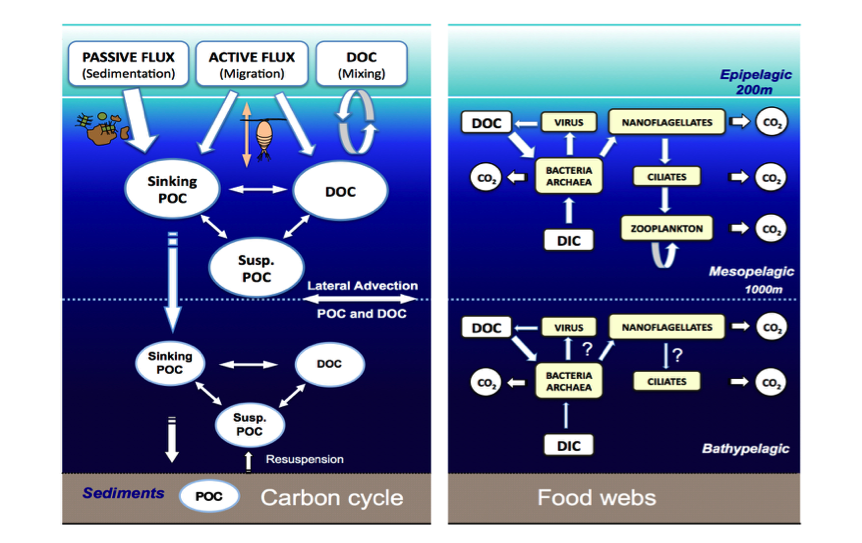Ph.D. Program in Oceanography and Global Change at the Canary Islands, Spain
Microbes are the dominant drivers of marine biogeochemical cycles via metabolic processes. Heterotrophic bacteria fuelled the “microbial loop” uptaking dissolved organic matter and remineralizing –through respiration- into carbon dioxide. Measuring bacterial respiration in aquatic environment is consequently essential to tackle the carbon cycle in the global ocean. Despite its importance, ascertaining the bacterial contribution to the carbon fluxes is a cumbersome and tedious task given the need to isolate bacterial assemblage from the rest of the planktonic community by filtration processes besides of in vitro incubations. Such respiration estimates are arguably not a faithful reflect of the natural responses due to the so-called “bottle effect” leading a long-lasting scientific controversy in the use of in vitro methodologies in the extrapolation to in situ conditions. The in vivo enzymatic ETS assay, has been proposed as a more reliable proxy of in situ respiration in aquatic ecosystems against other techniques such as the in vitro ETS assay or the Winkler method. Although at first sight the in vivo assay seems to be faster, simpler and more reliable in addressing actual respiration rates, there are some methodological issues that question its usefulness. In this study we test the toxicity of INT at three different concentrations (0.1, 0.2 and 0.4mM), during a typical in vivo ETS assay with natural planktonic communities collected in coastal waters of Gran Canaria and bacterial batch cultures. Our results reveal a significant toxic effect of INT over heterotrophic microorganisms. Bacterial viability tests indicated, just after 30 minutes of incubation, a loss in the cellular membrane integrity in all samples inoculated with INT, regardless of the concentration employed. Futhermore, using leucine incorporation, it was shown that the INT has a rapid toxic effect on bacterial cells, inhibiting protein synthesis, a key physiological function. Although the in vivo enzymatic ETS assay has been presented as a reliable alternative to estimate “actual” respiration, the damaging effect observed over the cellular physiological state due to INT suggests that this method may yield misleading results.

Sacado de Arístegui et al. 2009



